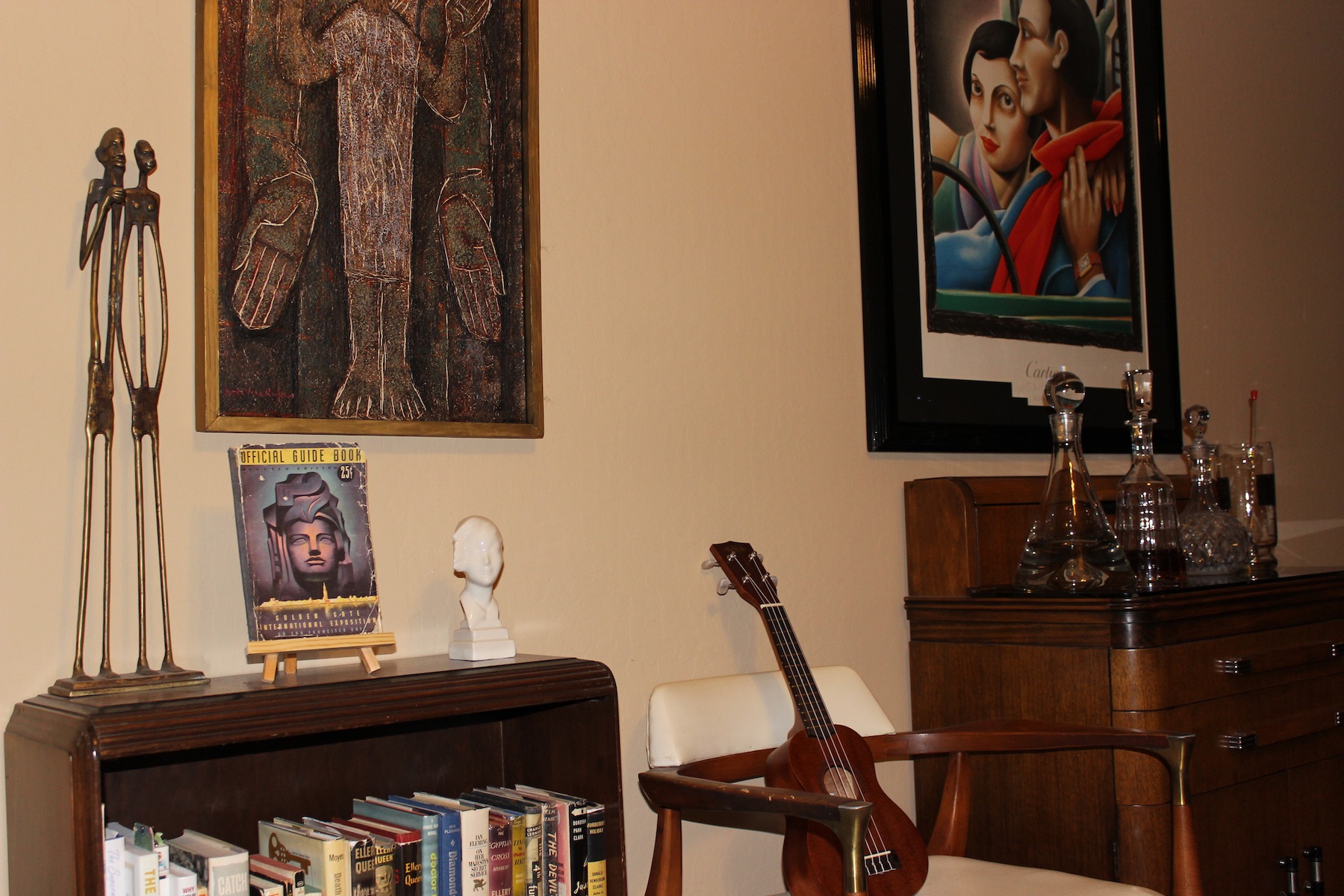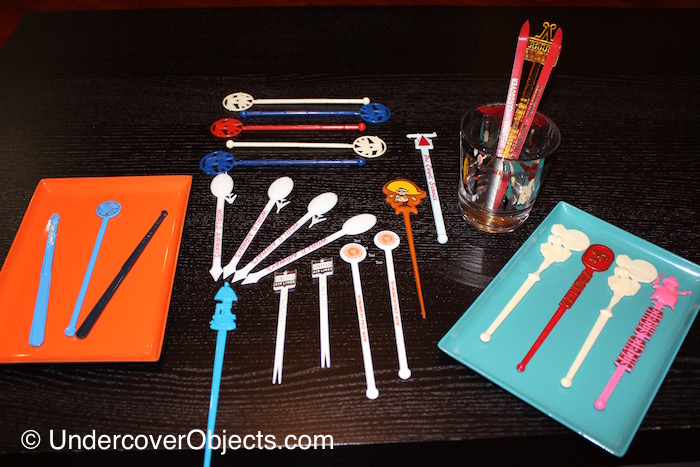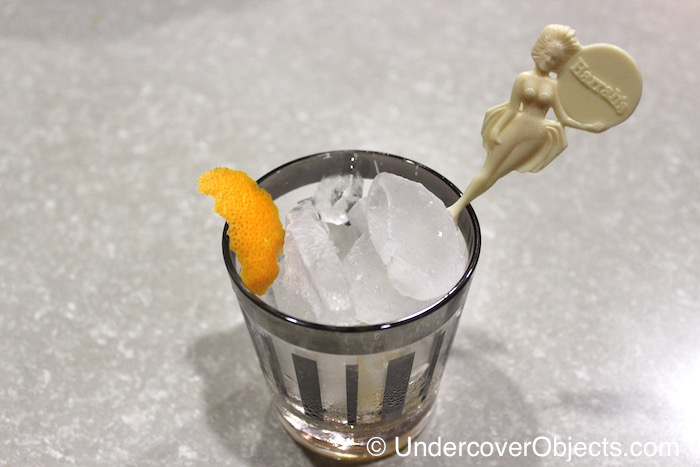 The only thing I knew about swizzle sticks before I started writing this was that they make my drinks taste better. Maybe it’s because the vintage swizzle sticks I use connect me to a time in the mid-century when drinking was just more fun.
The only thing I knew about swizzle sticks before I started writing this was that they make my drinks taste better. Maybe it’s because the vintage swizzle sticks I use connect me to a time in the mid-century when drinking was just more fun.
I found some vintage swizzle sticks at an estate sale recently and picked up a few more at an antique shop. Now I have questions: What is a swizzle stick? When was the swizzle stick invented? Am I the only person that collects these? Are they valuable?
Before we get to the answers, let’s take a look at a few of my favorites.
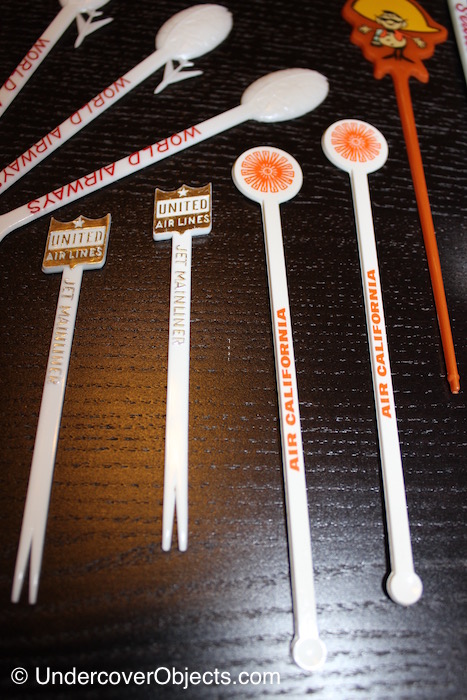
Many of these are are from airlines, including airlines that no longer exist: Air California, World Airways, and Pan Am.
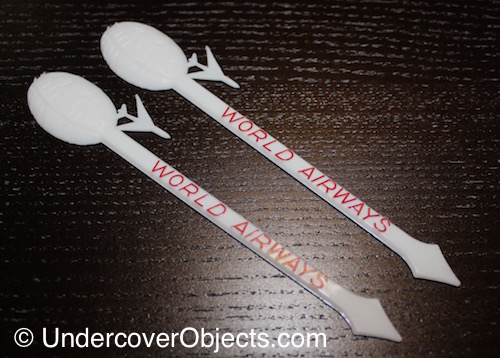
Back to my questions… What is a swizzle stick? It depends who you ask. There is apparently a tree in the Caribbean called the Swizzlestick Tree (Quararibea turbinata). The sticks from this tree have a sort of pinwheel on one end. These can be used to mix drinks, including a kind of drink called a swizzle (yes, that’s a thing), by inserting it into the drink and rotating, usually by rubbing the palms of the hands together.
There is another version of the swizzle stick that looks a bit like a whisk at one end. These were used to tame the bubbles in champagne, perhaps to prevent embarrassing burps in refined settings.
Next question: When was the swizzle stick invented?
Our modern swizzle stick, complete with advertising, is credited to one Jay J. Sindler, who patented the idea in February 1935 (Patent No. 1,991,871). He was primarily concerned with fruit removal, it seems. The “implement” was useful and perhaps imperative for society drinkers: “As a specific example, the difficulty of securing a cherry resting at the bottom of a cocktail glass, without resorting to boorish antics obnoxious to people accustomed to polite and social usages is so well known as to have become a matter of public comment and jest.” (That is from the actual patent filing.)
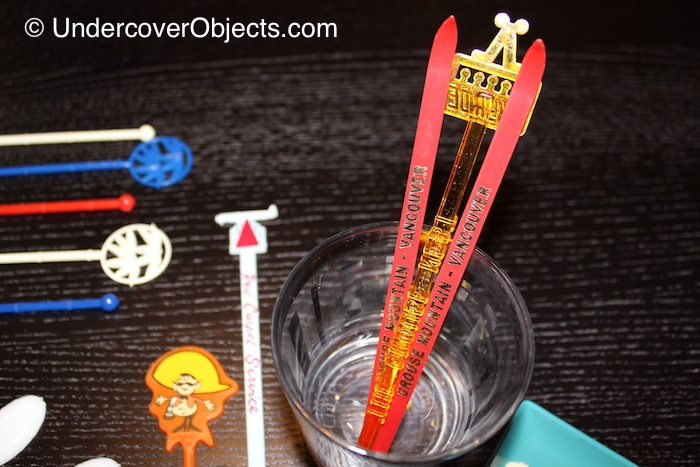
Am I the only person that collects these?
Nope. It seems that there is an International Swizzle Stick Collectors Association. They apparently have conventions with some regularity. Also, judging from the number of swizzle sticks available for sale on eBay, this is clearly a healthy market. I am seriously considering joining the ISSCA.
Are they valuable?
It seems that most vintage swizzle sticks are worth between a few cents and a few dollars each. Some can sell for considerably more. The key factor seems to be materials. Vintage gold or silver swizzle sticks can sell for several hundred dollars, especially if there is a brand such as Cartier or Tiffany & Co. associated with it. Bakelite swizzle sticks also do fairly well.
To me, they are valuable in another way. In addition to helping your cocktail party guests keep track of their drinks, a vintage swizzle stick can put you in places long gone and connect you with times long past. People save these for a reason. They are memories, experiences. When you slip a vintage swizzle stick into an Old Fashioned, for example, you are getting more than whisky, you are getting a piece of a memory. That memory may sharpen the bitters or it may sweeten the sugar. Either way, the drink always tastes better.
Object: Vintage swizzle sticks
Source: Estate sale in California and also Antiques Colony
Notes: Great for keeping track of drinks at cocktail parties
Status: My private collection (and in frequent use!)
